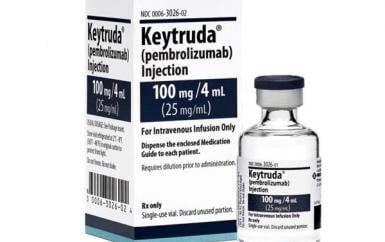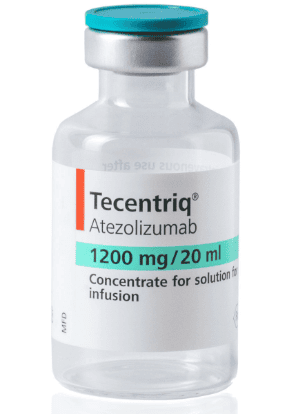This is an automatically translated article.
Uterine papillary cell carcinoma (UPSC) is a rare form of endometrial cancer, occurring in only about 10% of uterine cancer cases. The disease can spread quickly, recur after treatment even if detected early. The disease causes about 40% of endometrial cancer deaths.1. Causes and symptoms of uterine papillary cell carcinoma
The disease is also known as cervical carcinoma in situ or cervical adenocarcinoma. The disease is common in black, normal-weight, and post-menopausal women. There are several gene mutations that increase the risk of this disease. Women with this condition also often have relatives with endometrial, ovarian, and pancreatic cancers.
The most common symptom of the disease is bleeding after menopause. If you have this type of cancer, you may also have pain after sex, abdominal pain, and unexplained weight loss. In addition, patients may also have an abnormal Pap test during routine gynecological exams.
2. Diagnosis of uterine papillary cell carcinoma
To diagnose the disease, the doctor may take a tissue sample from the endometrium and take it for a biopsy to detect cancer. However, this method is not always effective. Pelvic ultrasound is another way to diagnose the disease. A scan that measures the thickness of a line in the uterus can be a warning sign of disease.

Siêu âm vùng chậu có thể giúp bác sĩ chẩn đoán ung thư biểu mô tế bào nhú tử cung
3. Treatment of uterine papillary cell carcinoma
3.1 Laparotomy Tumor Staging: Patients with UPSC often have no symptoms until the cancer has spread outside the uterus. At that time, the patient will have an laparotomy to check the surrounding organs to see if the cancer has spread - stage the tumor.
Biopsy: During open surgery, your doctor will take samples of tissue and lymph nodes for biopsy. The patient may also have a pelvic wash. Surgeons opt for a less invasive laparoscopic approach.
Hysterectomy: Treatment for uterine papillary cell carcinoma begins with removal of the uterus. The doctor will also remove the fallopian tubes, ovaries, tissues that may be affected by cancer, and lymph nodes. If the cancer is found in stage II, the patient may have the cervix and upper part of the vagina removed.
3.2 Radiation Therapy After surgery, the patient can be treated with radiation therapy. Your doctor will use radiation to treat cancer locally or prevent the cancer from coming back. However, radiation therapy is not effective as a stand-alone treatment. Your doctor may use external radiation or near-radiotherapy (internal radiation). Proximal radiotherapy is the insertion of a tiny cylinder of radiation into the vagina to kill cancer cells. Your doctor may also combine external and internal radiation therapy.
3.3 Chemotherapy Even in the early stages of UPSC, doctors can use chemotherapy to kill any remaining cancer cells after surgery. Drugs used to treat early-stage disease include cisplatin and carboplatin in combination with paclitaxel. Sometimes, doctors also recommend chemotherapy and radiation at the same time or in cycles of both treatments.

Hóa trị được ứng dụng trong điều trị ung thư biểu mô tuyến cổ tử cung
3.4 Targeted therapy In about 30% of women with uterine papillary cell carcinoma, a gene, HER2/neu, makes too many copies of itself. Doctors use the drug trastuzumab (Herceptin) that targets HER2/neu to stop it. When this drug is used in combination with chemotherapy, it helps women with the disease live longer, the disease progresses more slowly.
In addition, scientists are continuing to study other targeted drugs to treat the disease. Pertuzumab (Perjeta) may work better than trastuzumab. Lapatinib (Tykerb) blocks HER2 and may stop the growth of melanoma.
4. Notes after cervical carcinoma in situ treatment
After the treatment of UPSC, the patient should see the doctor regularly to check whether the disease has recurred, to check the overall health. If you notice bleeding from the vagina or rectum, unexplained weight loss, pelvic pain, swollen legs or abdomen, cough or difficulty breathing,... you should call your doctor right away.
Uterine papillary cell carcinoma has a high recurrence rate, even when detected early. About 30-80% of patients with UPSC stage I and II have a relapse. Patients and doctors will consider treatments based on the location of the melanoma and the extent of metastases. In addition, patients can choose palliative care to improve quality of life.
After UPSC treatment, the patient should maintain a healthy lifestyle, eat healthy foods, rest and get enough sleep, don't smoke, don't drink alcohol,... At the same time, You should pay more attention to exercise to recover from cancer treatment, improve health, reduce fatigue and stress. You can start slowly and gradually increase your activity level if it feels right.
Uterine papillary cell carcinoma is a fairly dangerous cancer with a very high recurrence rate. Therefore, despite early detection and aggressive treatment, patients still need to follow all the doctor's instructions to control the disease well.
Vinmec International General Hospital is a high-quality healthcare address with a team of doctors, experts with many years of experience in the profession, combined with modern equipment and machinery. Therefore, when there are health problems, patients can go to the hospital to register for an examination for in-depth consultation.
Please dial HOTLINE for more information or register for an appointment HERE. Download MyVinmec app to make appointments faster and to manage your bookings easily.













